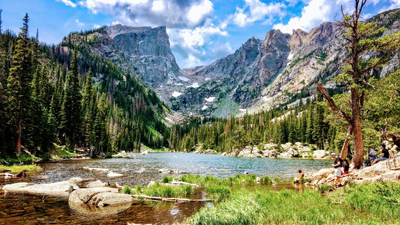
Story at a glance
(NEXSTAR) — For one day only this week, national parks that usually charge an entrance fee will be free to visit.
November 11, Veterans Day, marks the last of the five days the National Park Service is waiving admission fees for this year.
We already saw free admission on January 16, which is Martin Luther King Day; April 22, the first day of National Park Week; August 4, to mark the anniversary of the Great American Outdoors Act; and September 23, for National Public Lands Day.
All of the 109 sites that charge an entrance fee will be free to visit on Saturday. Fees are still required for overnight camping, cabin rentals, transportation, group day use, and use of special areas.
Last year, there were roughly 312 million recreational visits to 395 national parks that track attendance, a 15 million increase over 2021. The most visited park was Blue Ridge Parkway, which received 15.7 million visits last year, edging out the Golden Gate National Recreation Area by slightly more than 72,000 visits.
Why do national parks charge for admission anyway?
While it’s true that your federal income taxes do in a way fund the National Park Service, your contributions are relatively small in comparison to the agency’s needs. According to its most recent budgeting information, NPS received roughly $3.475 billion for 2023, and has asked for $3.764 billion in funding for 2024. That is a drop in the bucket for the roughly $21.8 billion the agency estimated it needs for maintenance and repairs across the park service at the end of 2022.
So while the national parks do receive funding from Congress, and additional funds designated for the parks, others turn to entrance fees to support certain projects.
Under the current Federal Lands Recreation Enhancement Act, the National Park Service is allowed to collect and retain revenue. And fee revenue has to be used to “enhance visitor experience.”
“At least 80 percent of funding from recreation fees stays in the park where it is collected, and the other 20 percent is used to benefit parks that do not collect fees or parks which generate only a small amount of revenue,” the National Park Service explains.
Fees are established based on a structure the agency uses that “simplifies and standardizes entrance fees across parks of similar types.” Rocky Mountain and Zion, for example, are both large and well-visited parks that have park-specific annual passes of $70, a per-vehicle fee of $35, a per-person fee of $20, and a per-motorcycle fee of $30.
Many parks also explain how they use the entrance fee funds.
You can see a full list of national parks that have entrance fees here, and how some of those parks have used the funds here.
In addition to protecting and preserving America’s stunning natural resources, it’s also clear the impact national parks can have on the areas around them. In 2022, tourism to National Park Service units brought in a cumulative $23.9 billion to the communities within 60 miles of a national park. That is the highest amount of visitor spending the National Park Service has reported, surpassing the previous record set in 2019 by nearly $3 billion.
So while paying a park entrance fee may be annoying at times, you’ll likely soon see your money at work while you walk around the park, use the facilities, or stop by the visitor center.